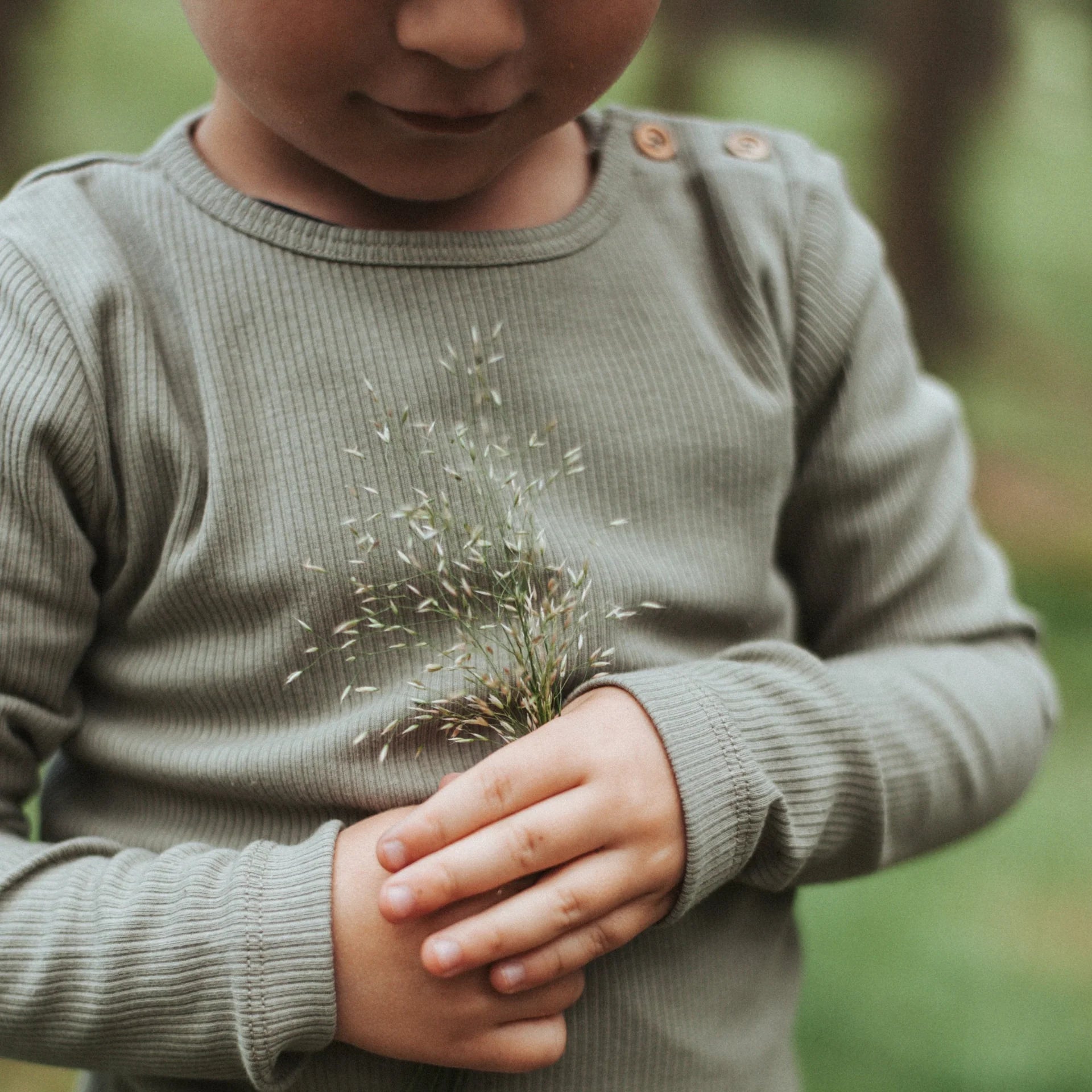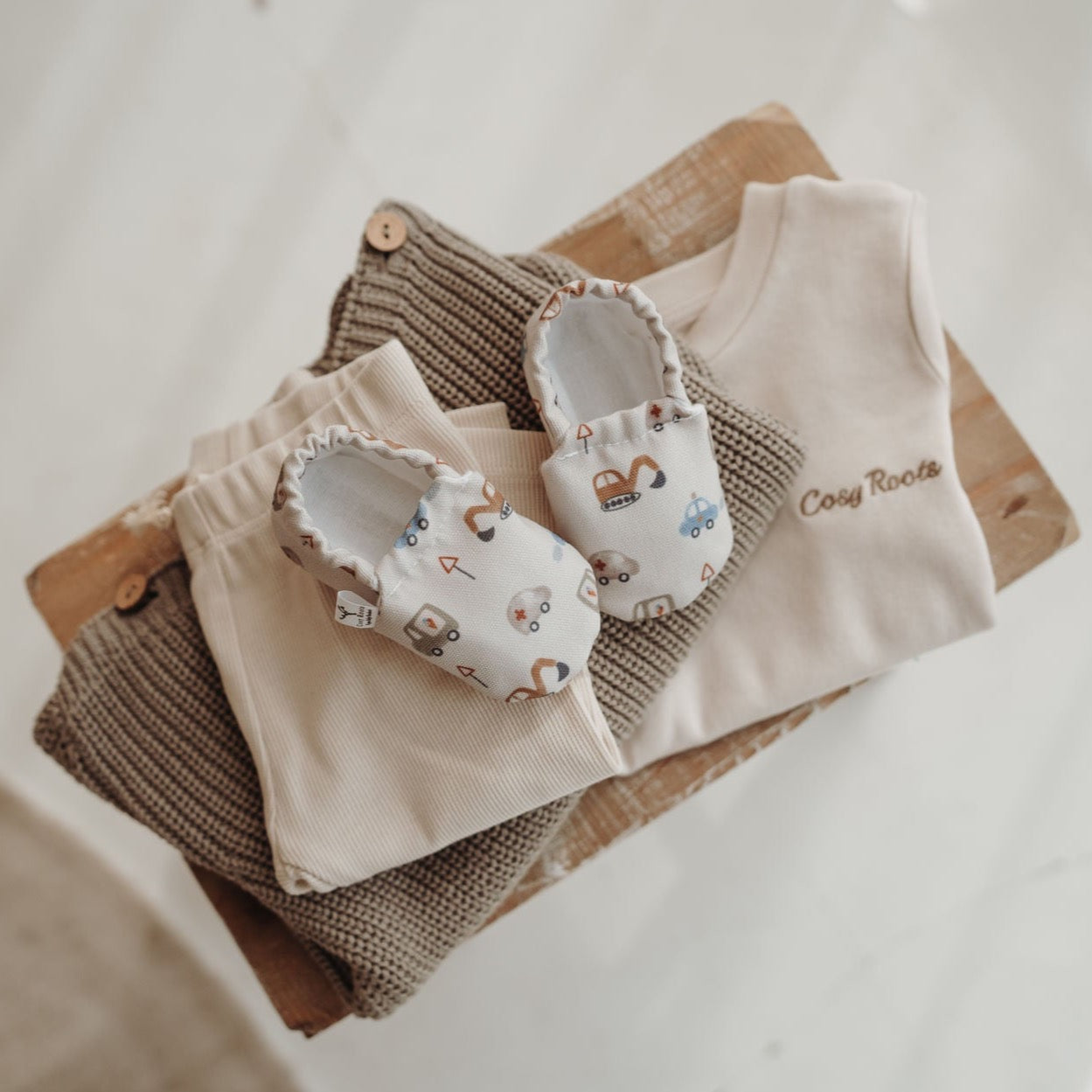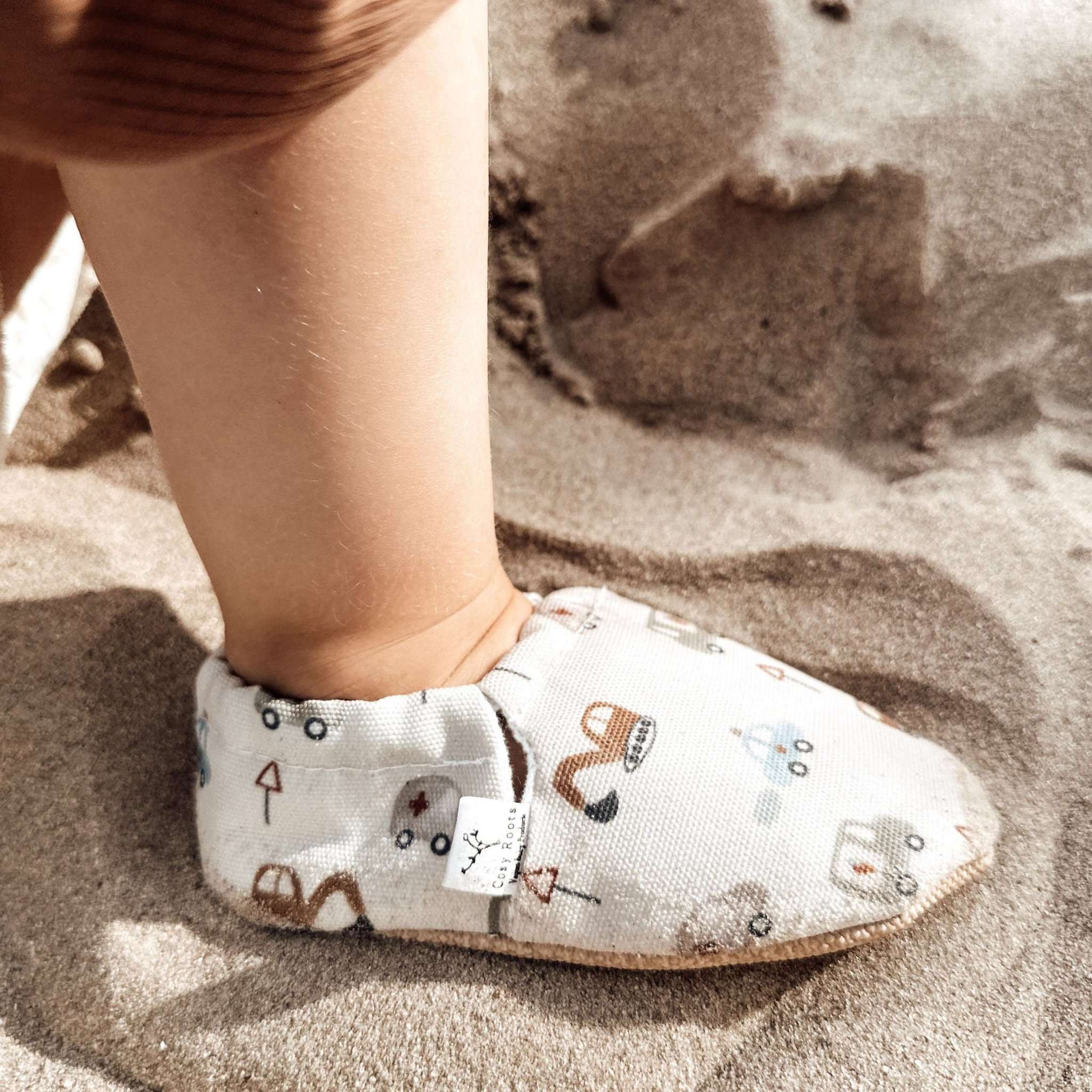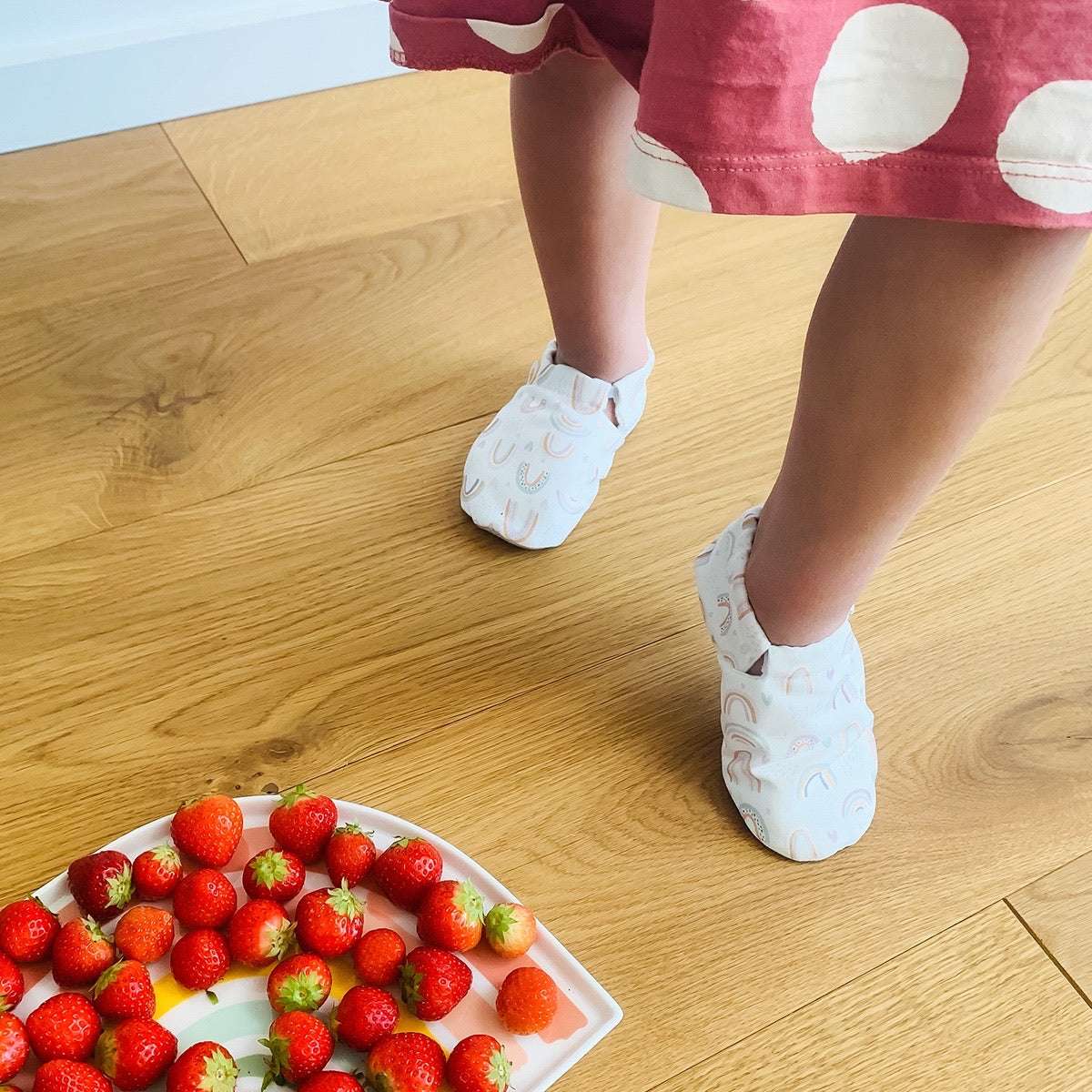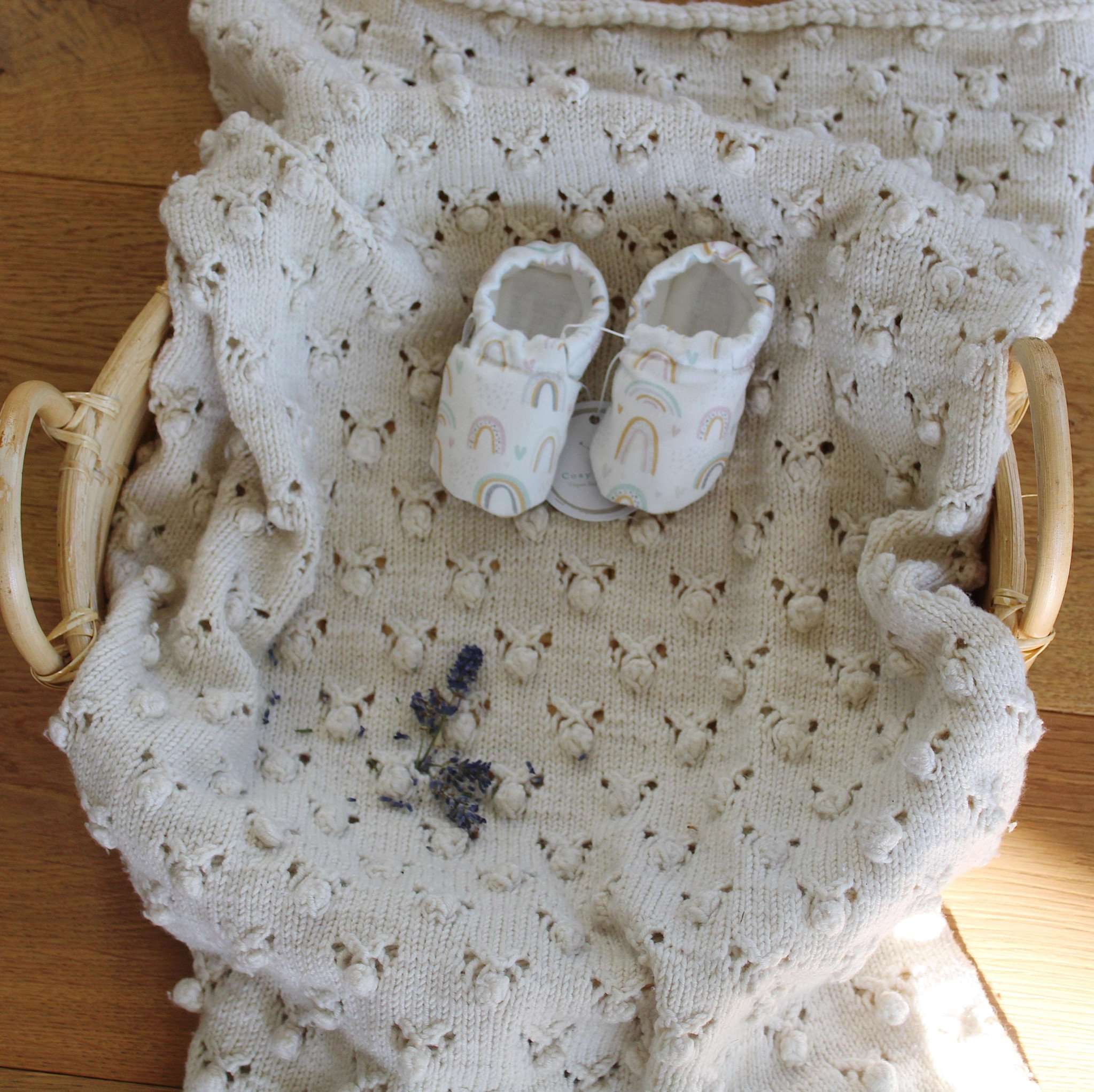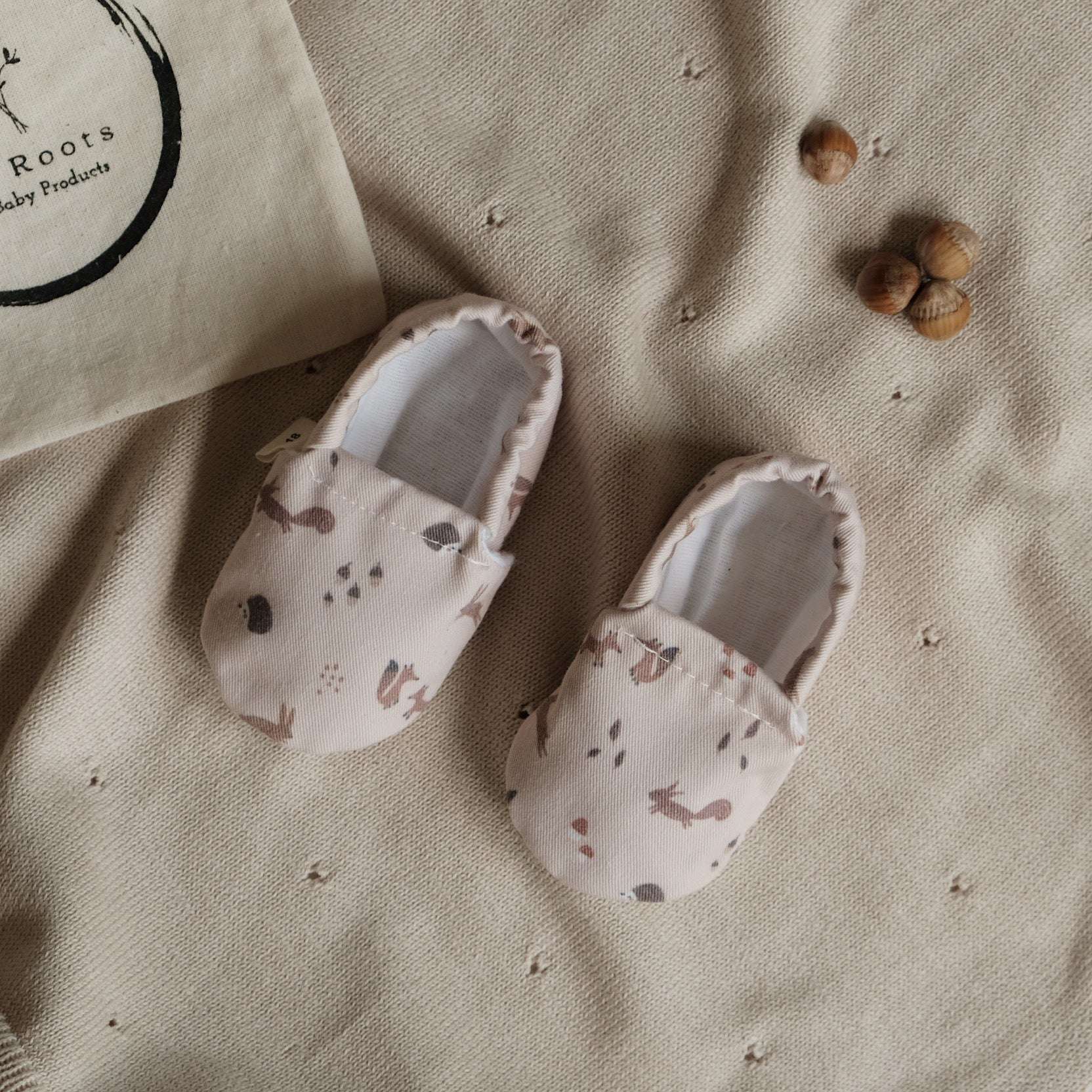Sustainable clothing embodies quality, durability and responsible use of resources. But the issue of sustainability is not just about buying fair fashion - because only when we wear our clothes long enough does the ecological footprint become smaller. In general, the longer we wear our clothes, the better! That's why we are big fans of oversized styles - the casual cut not only looks cool, but also has the positive side effect that the clothes practically grow with your little darling. Our knitted sweaters or cardigans in our bright colors are therefore the perfect choice for little ones, especially for the upcoming spring season.
Proper care for sustainable clothing is an important step in ensuring the longevity of the items. It's about being mindful and appreciative of what we own and use. By treating our clothing with care and giving it the attention it needs, we can ensure that it stays with us for a long time while minimizing our environmental impact. That's why we want to show you today what you should pay attention to when caring for sustainable clothing - whether for your little one or for yourself.
Our 7 tips on how to optimally care for your sustainable wardrobe:
-
Please note the washing and care symbols on the label:
A simple but often overlooked step is reading the care labels. These provide instructions on how to best clean and care for the product. Whether it's delicate knitted booties , accessories such as muslin swaddles or knitted beanies - each type of fabric processing is unique in its feel, resilience and breathability and may require different care measures. For more sensitive items, we recommend using laundry nets, which protect the clothing from damage, maintain the quality and shape and thus extend its lifespan.
-
Don’t wash everything after every wear:
Avoid washing clothes too much, especially with items like our cuddly, soft dungarees . Wear clothes once and then put them straight in the wash? Better not! Every wash cycle removes color from clothes, wears out the material, makes them more susceptible to holes, and causes them to lose their shape. If possible, choose to hand wash - alternatively, you can select a gentle cycle in the washing machine (eg delicates). Don't forget to turn the clothes inside out. :)
-
Use an environmentally friendly detergent:
Conventional detergents usually contain ingredients such as surfactants, fragrances, phosphonates and silicones, which also end up in nature. To minimize environmental impact, we recommend environmentally friendly detergents such as those from kaëll : these contain no aggressive chemicals, parabens, bleach, synthetic dyes, etc. and are particularly gentle on sensitive skin. The right detergent is not only important for the environment, but also for the care of your textiles. It makes sense to clean the particles with detergents that are tailored to them. This way you avoid the fibers of the clothing suffering, a gray haze forming, or the colors fading too quickly. Also pay attention to the dosage; cleaning agents are usually highly concentrated, so you generally need less than you think.
-
Air drying instead of dryer:
Using a dryer can damage the fibers of the clothing and lead to faster wear. Instead, the clothing should be dried in the air. This is not only gentler on the clothing, but also saves energy. A little tip for those who don't like ironing: Our T-shirts and slim long-sleeved shirts can be dried directly on hangers - this saves a few steps, guarantees a smooth, wrinkle-free fabric and can be hung straight from the drying rack into the wardrobe. Knitwear, such as our cuddly soft Mum sweaters or fleece jackets , should be dried lying down, e.g. on a clean towel. This way the clothing will stay in its optimal shape. Also make sure not to place the drying rack in direct sunlight and turn the clothing inside out - this is the best way to protect the colors from fading.
-
Repair instead of throwing away:
If your sustainable clothing is damaged, try to repair it instead of throwing it away straight away. Give your clothes a second chance! Broken buttons can be quickly replaced, and smaller holes can simply be sewn up. Make sure to choose the thread that matches the color of the fabric. Depending on the strength of the material, you should choose a thicker or thinner needle size. By repairing, you can significantly extend the life of the clothing and save resources at the same time. If you don't feel confident about repairing it yourself, the best thing to do is ask family and friends - there are more hidden talents than you think! And if you do decide to part with something, there are still great options like second-hand platforms and flea markets.
-
Store clothes carefully:
Proper storage of clothes is crucial to protect them from damage caused by moisture, light and pests. Store clothes in a dry, dark place and use narrow hangers to create more space for the clothes. However, it is better not to hang knitwear on hangers. In this case, the shape quickly becomes distorted, so hanging storage is better avoided. Instead, the items can be rolled up and stored one behind the other in the drawers. This way the clothes are not crushed and wrinkles can be avoided.
-
Invest in good quality:
While higher quality clothing may be a little more expensive, it is usually better made and lasts longer. In our clothing range, we therefore only use fabrics made from GOTS-certified organic cotton , which are lovingly made into magical pieces by small studios. In addition, our cotton is free from harmful substances and particularly gentle on the skin. In our shop you will find many great products for you and your little one, feel free to take a look around!

What else should you consider besides our tips?
An important part that should not be underestimated is sorting the clothes before washing. If you're in a hurry, it can happen that something colorful sneaks into the light-colored laundry by mistake... and hey presto, there's a problem. So take a moment more to sort thoroughly.
Also pay attention to the timing when hanging up: it is better to take the clothes off the clothes rack a day too late than too early. If the clothes are not completely dry when they are in the closet, the damp clothes can start to smell bad and - in the worst case - form mold. Mold spores are not always visible and can not only be harmful to your health, but also damage the color of the clothes.
For all those who have not yet dealt in depth with the topic of sustainable clothing, we would like to point you to our articles on the topics of " Fair Fashion: what is it actually? " and " Sustainable clothing: how to recognize it and what you should pay attention to ". This is a good start to understand why it is actually so important to pay attention to sustainability in the textile industry.


